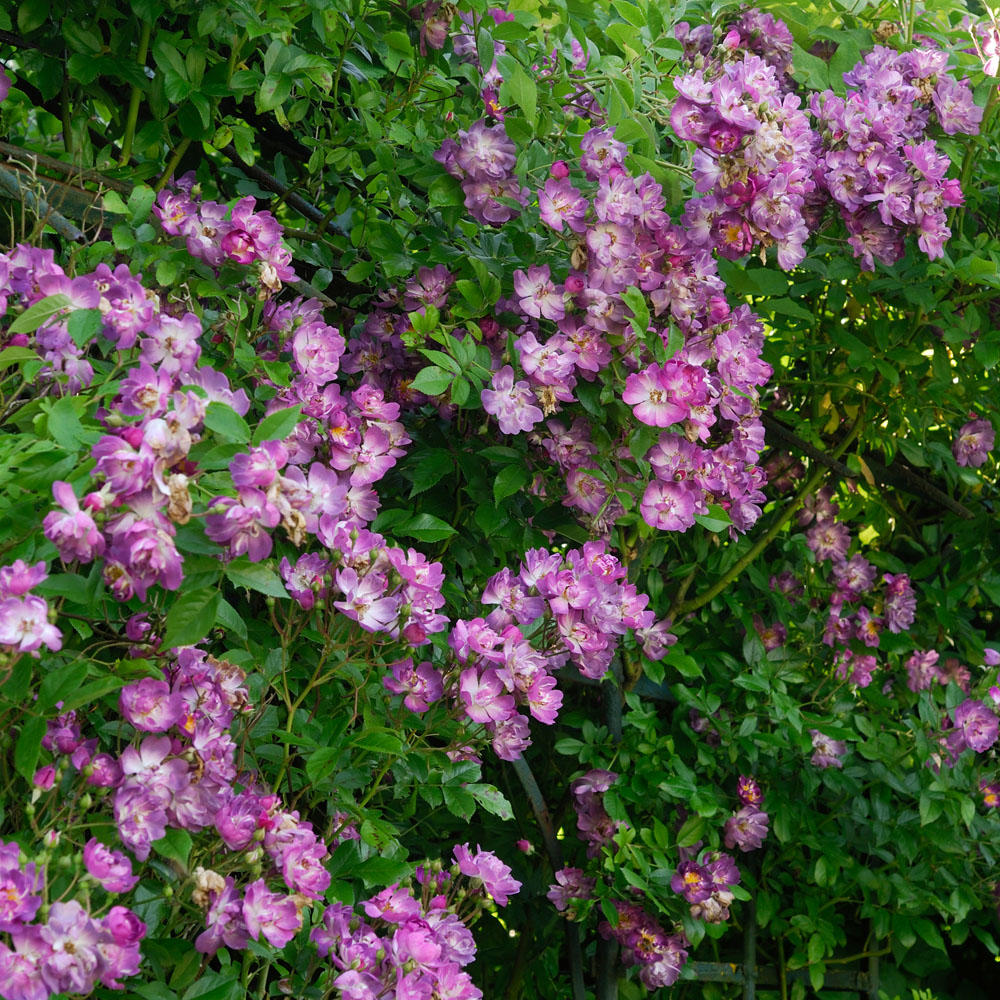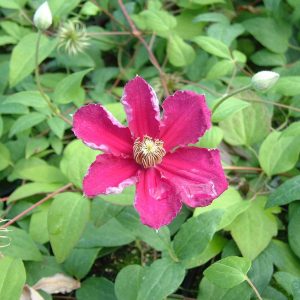Description
Rosa ‘Veilchenblau’ is a vigorous climber with striking, small violet-blue flowers in summer. The flowers have a pleasant fragrance and are semi-double, produced in large clusters that contrast beautifully with the bright green foliage. As the flowers fade, they are replaced by attractive, ornamental hips that extend the season of interest well into autumn. This historic rose, which dates back to 1909, is ideal for covering walls, trellises, or arches in a cottage garden or mixed border.
Key Facts
- Common Name(s):Veilchenblau Rose
- Hardiness:Fully hardy
- How big will I get? Rosa ‘Veilchenblau’ can grow to a height of 3m and a spread of 3m.
- Did You Know That:The oldest living rose is thought to be 1,000 years old and can be found in Hildesheim, Germany?
Plant Calendar
A rough guide to how this plant will change through the year.
| Jan | Feb | Mar | Apr | May | June | July | Aug | Sept | Oct | Nov | Dec | |
| Flowering Time |  
|  
|  
| |||||||||
| Foliage Colour |  |
 |
 |
 |
 |
 |
 |
 |
 |
| J | F | M | A | M | J | J | A | S | O | N | D |
 
|  
|  
| |||||||||
 |
 |
 |
 |
 |
 |
 |
 |
 |
Care Guide

Soil Requirements
Rosa ‘Veilchenblau’ prefers moist but well-draining soil. This plant can grow in soil with a wide range of pH levels, it is not picky about the pH level of the soil.

Best Position
Rosa ‘Veilchenblau’ prefers a sheltered position and can cope with either full sun or partial shade.

Maintenance
Rosa ‘Veilchenblau’ should be pruned in late winter or early spring, before new growth begins. Start by removing any dead, damaged, or diseased wood from the plant, cutting back to healthy wood and sterilizing your pruning shears between cuts to prevent disease spread. To encourage the growth of new canes, cut back the lateral branches on the main stems to two or three buds. Tie in new canes to your support structure as they grow, using a soft material like twine or velcro tape to prevent damage to the plant. Finally, remove any crossing branches or branches that are rubbing against each other to prevent damage and encourage healthy growth. By following these steps, you can keep your climbing roses healthy, attractive, and blooming beautifully year after year.

Pest, Diseases and Wildlife
Rosa ‘Veilchenblau’ can have problems with aphids, leafhoppers, and scale insects , it can be vulnerable to certain diseases such as black spot, rust and powdery mildews. It is also known to attract bees, butterflies and other pollinators. It is not considered to be toxic.





